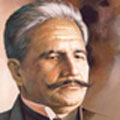|
|||
Mr Raj Chengappa of India Today focused on "National Security blinkers in the media." He began by looking at the recent round of talks and line of control (LOC) clashes [1997]. Referring to the third round of talks, he expressed his dismay that despite the passage of so many years, any contact between the two neighbours was still accompanied by suspicion, hostility and media coverage. "I think the maturing of our relationship will come only when such meetings become boring, routine and covered as any other news event" Talking about the recent clashes, he observed that both sides were receiving only "one version" of what has been happening. Even to this day, it wasn’t clear as to "who fired the first shot." Mr Chengappa was of the view that the media needed to play more awareness rather than just provide routine coverage of the happenings. It is their job to present both sides of the picture and to let the people decide for themselves. In this regard, he gave his own personal example of that when he was covering the story of the recent clashes at the borders. He had received both the picture of a displaced Indian family and an injured Pakistani boy from the wires and there was great temptation to use only the picture of the displaced Indian family but that would have projected only one side of the story so he used both the pictures. "Whatever it is, whatever battles we face, I think images like that change our perception as to who we are fighting, what are we doing" He called upon the print media to assume a more critical and analytical role as he felt that TV had a certain immediacy about it that did not permit sufficient analysis and questioning. Also, the media’s responsibility of providing objective and comprehensive coverage increases especially when it comes to covering sticky issues like Kashmir, nuclear programmes, military expenditure etc. He shared that when he wrote something good on the nuclear programmes, he would get a very good response from the people but when he started reporting the possible fire and health hazards of some of these nuclear power projects, the nuclear establishment got very upset. He was of the view that the role of the civil society, particularly the NGOs, was significant in this regard. "I regard a lot of the NGOS more successful than the Chief Executives or any industry because they are in a position with very little investment, very little resources and they actually mobilise thousands of millions of people and actually bring a difference to their life." Lastly, he recalled what a leading psychologist had told him: that there are two fundamental emotions displayed by human beings. Aggression, which symbolises our primitive existence; and empathy, that made us civilised and brought us together. Mr. Chengappa endorsed such seminars as important for fostering empathy between the people of the two countries and bringing them closer. |












